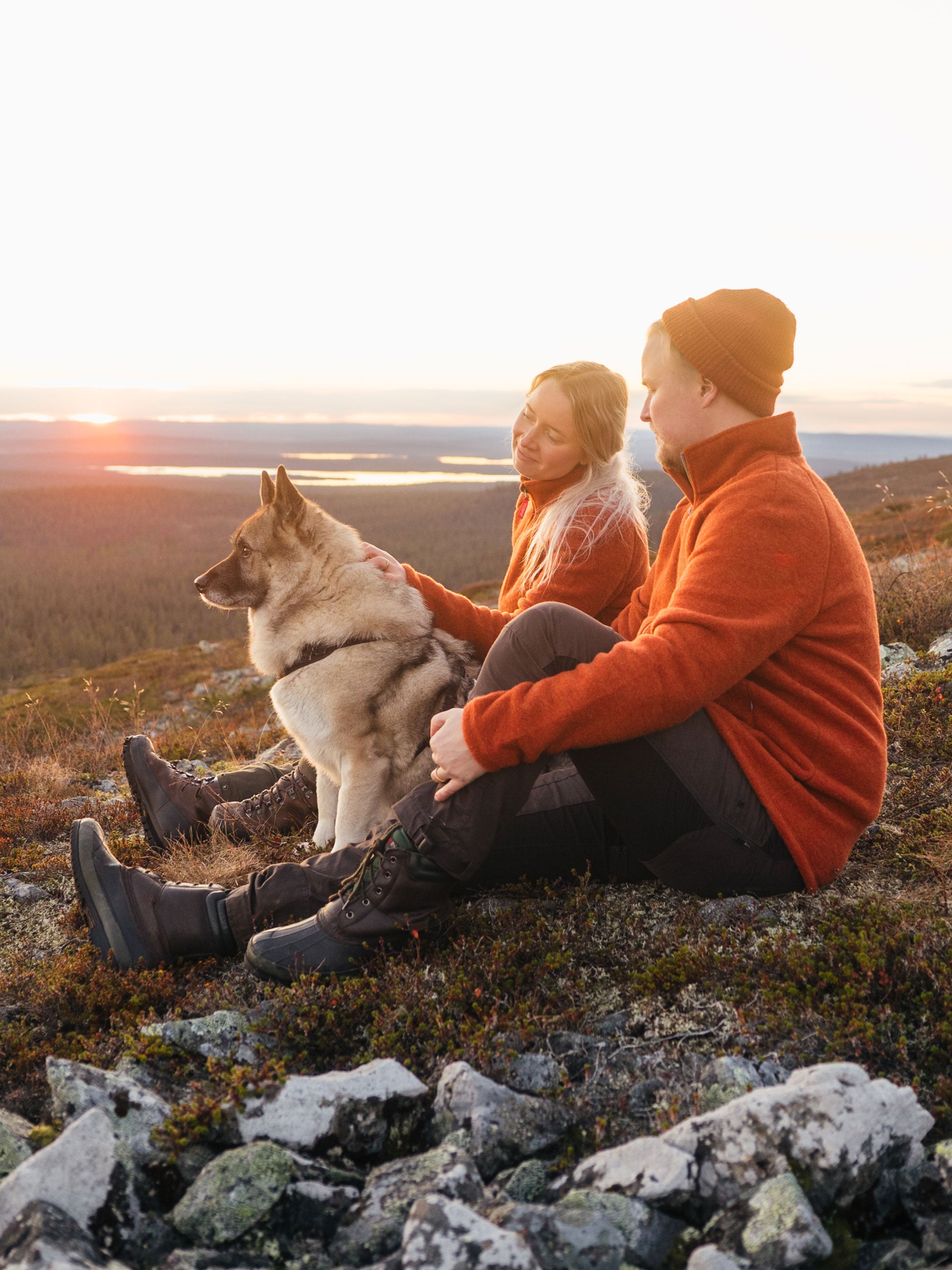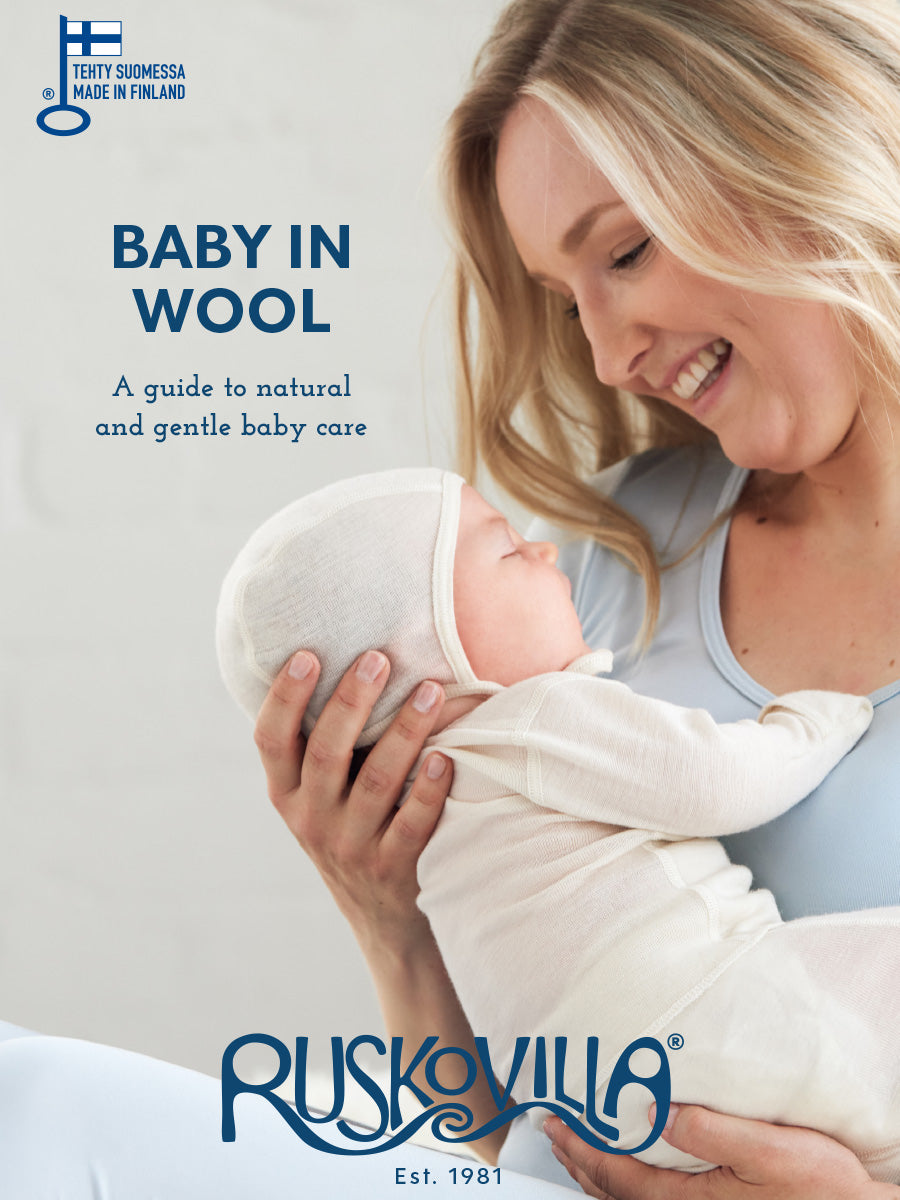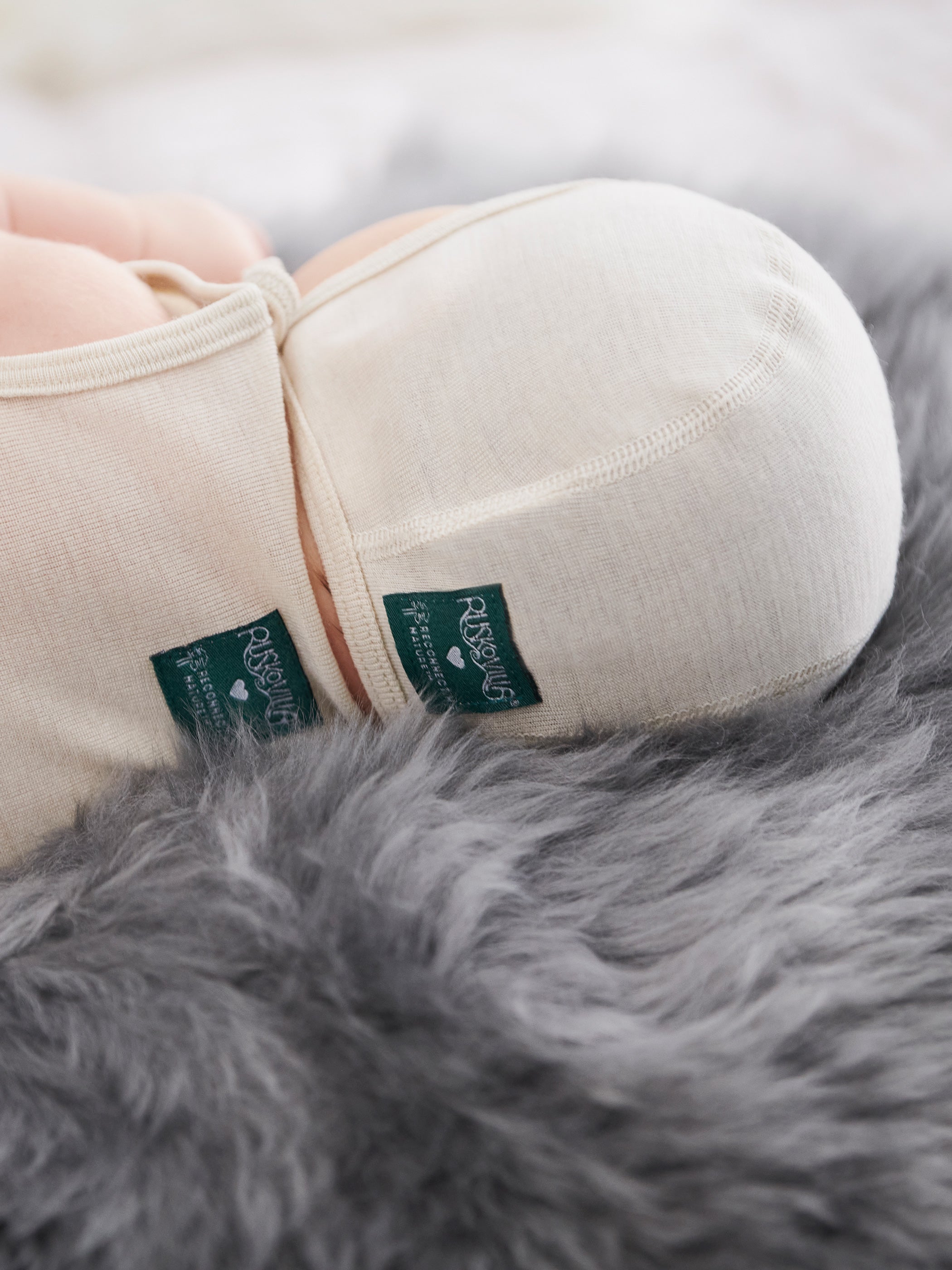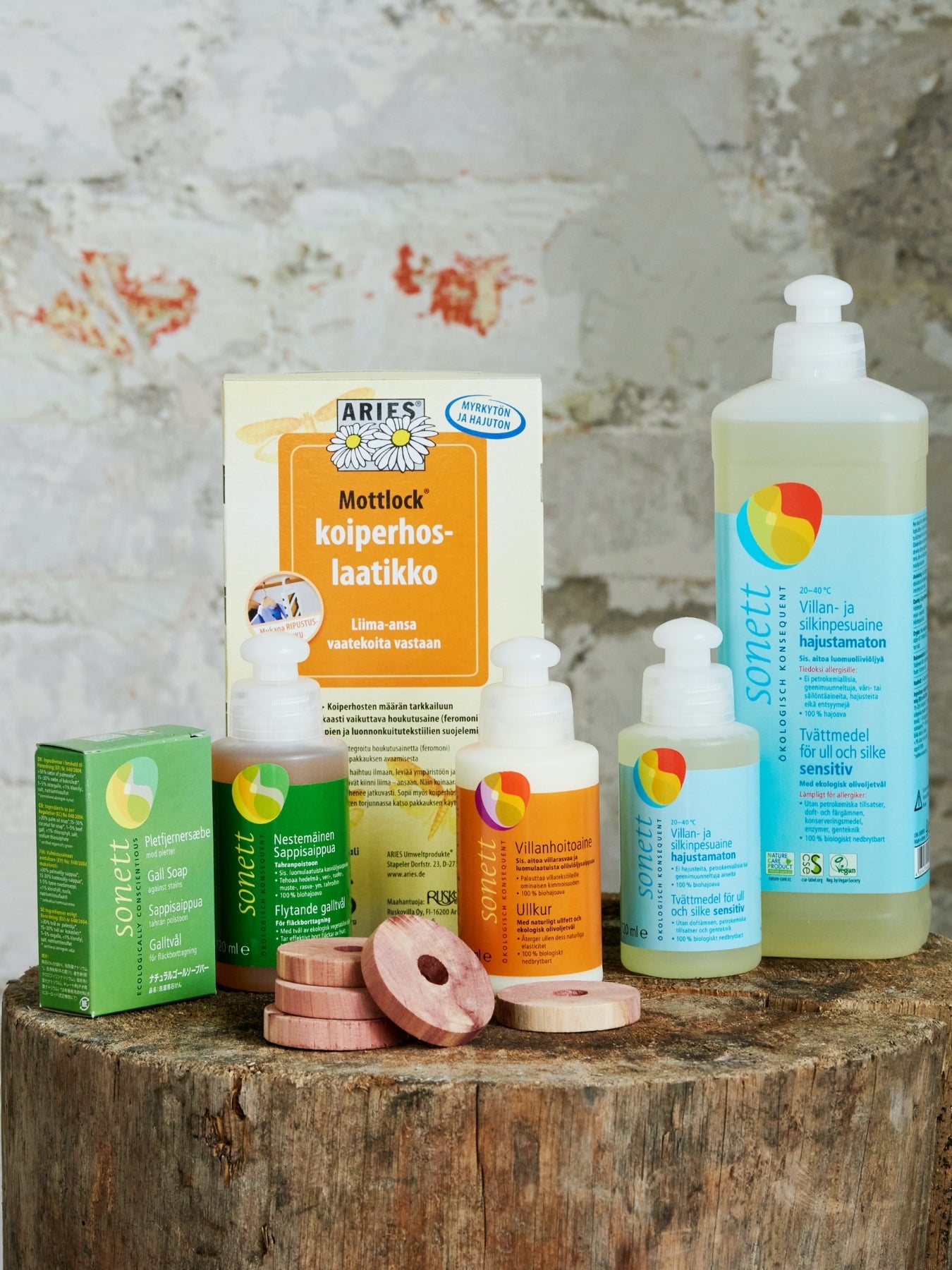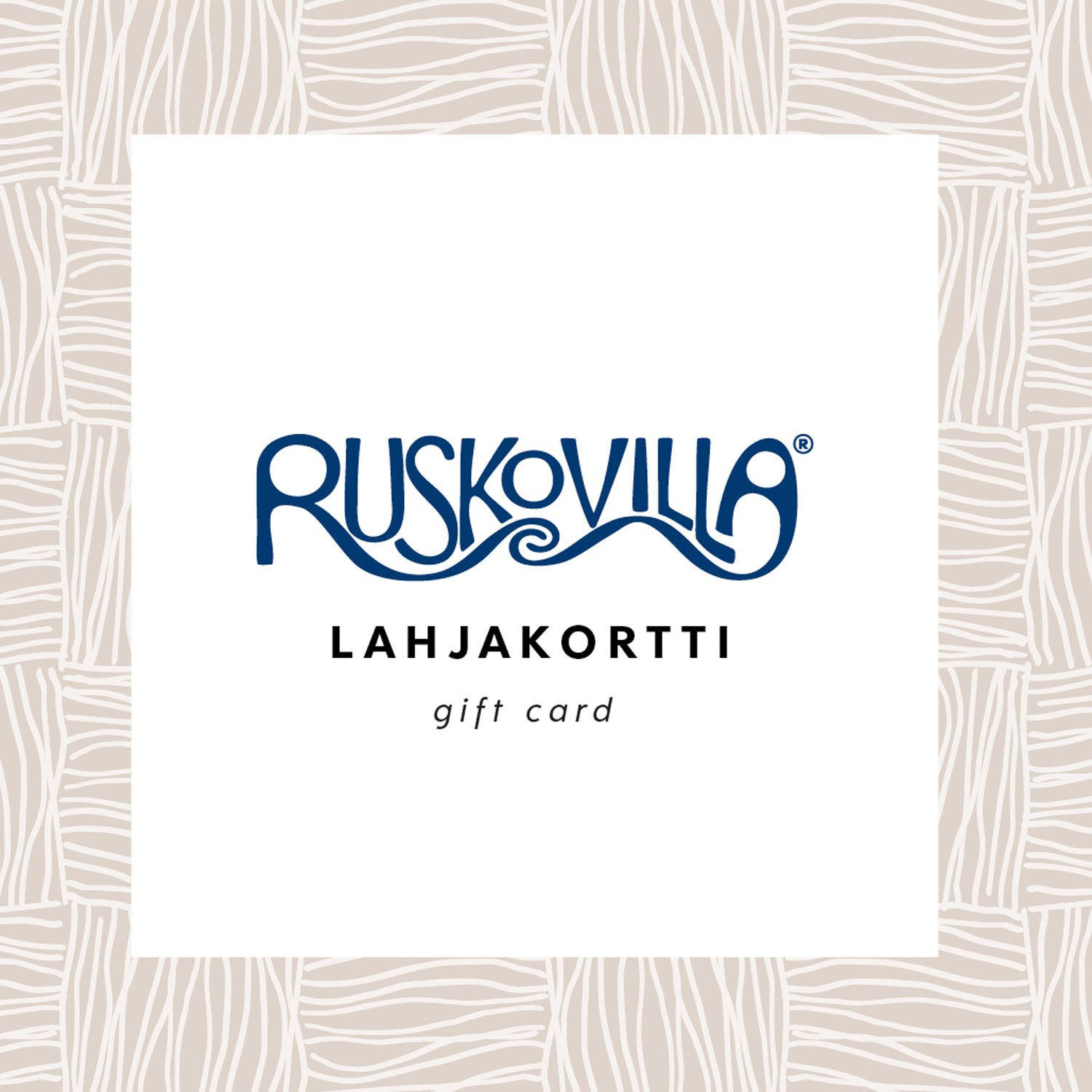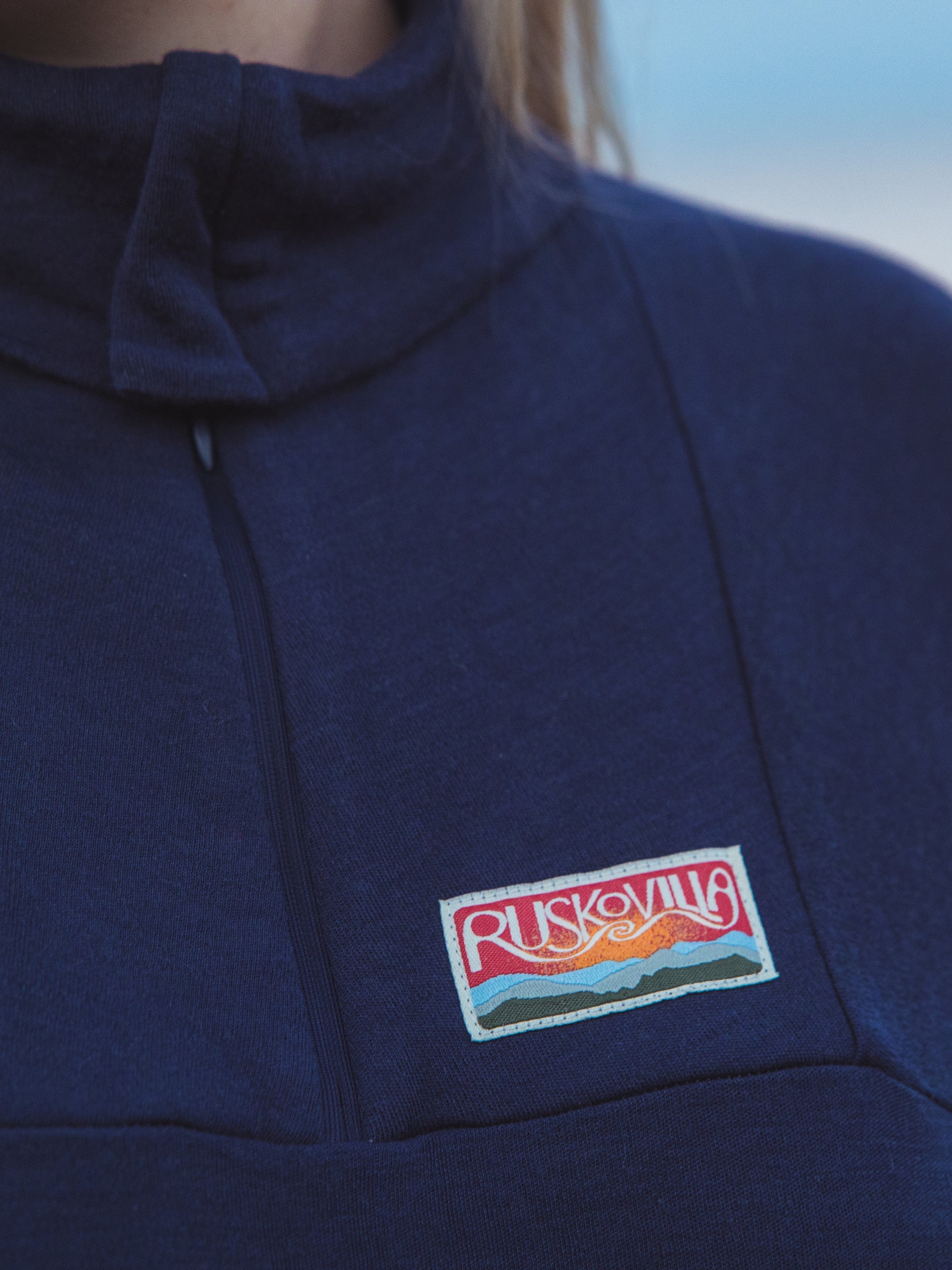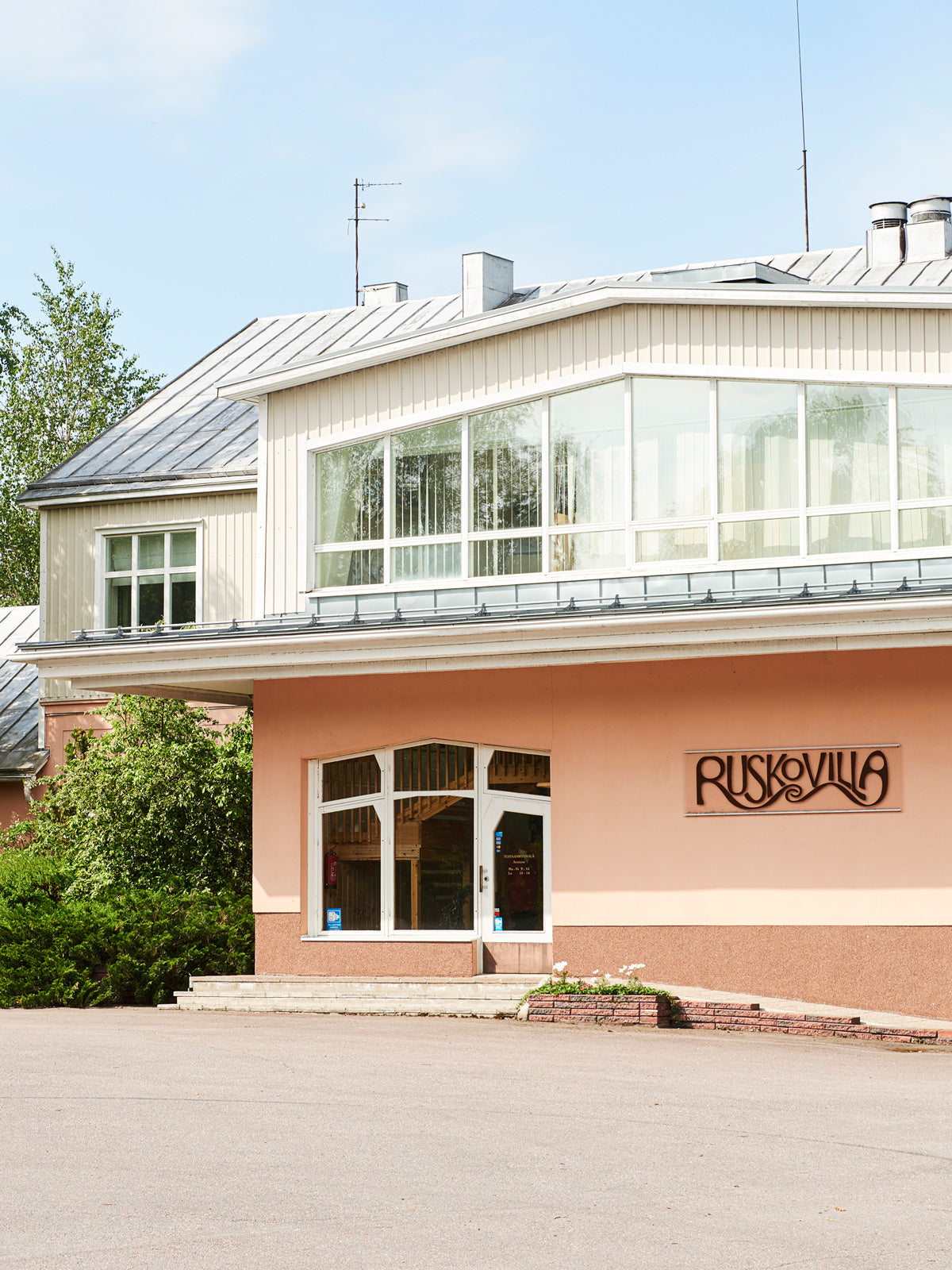The natural fibres we use
Nature is our best product developer
The skin is the largest organ in the human body, and chemical particles, such as those in clothing, enter our bodies through its bi-directional pores. That's why it doesn't matter what we put on our skin.
At Ruskovilla, we have always believed that natural fibres are the best we can offer our skin. For millennia, Mother Nature has been our main product developer, creating the best properties for each natural fibre for different uses.
The natural fibres we use in our clothing, accessories and bedding - merino wool, silk, silk wool and cotton - are all certified organic. The raw materials come from our long-standing and responsible suppliers, and to be certified they must not only care for nature but also for the well-being of their employees. For our part, we treat textiles with the minimum possible handling: dyeing is done in closed systems with reactive dyes, so the dye reacts perfectly with the fibre and leaves no residue. We do not use mothballs, which are harmful to humans and the environment.
Below we briefly describe each of the materials we use. We also provide more detailed information on the origin and manufacture of each individual product in our online shop.
Wool - Heat developed by sheep
The mulesing-free merino wool we use comes from reliable suppliers in Argentina and Uruguay. Smooth and unshrunk merino wool is only available from certain sheep breeds and from fine sheep underwool. In our experience, the highest quality certified organic merino wool, which is long fibre and up to seven times thinner than that of Finnish sheep, is best suited for underwear and comes from merino sheep grazing in the southern hemisphere.
The wool has been developed on our behalf by sheep who have lived for millennia under very different living and climatic conditions. We humans can also benefit from the fact that wool has had to be warm in the cold and cool in the heat. This is all thanks to the curly structure of wool.
In addition, wool can absorb up to 30% of moisture, such as sweat or rainwater, without feeling wet. Its surface is naturally dirt-repellent and neutralises, among other things, fine odours, all of which are important characteristics when choosing clothes for an active life. Wool is also a very fire-safe material compared to synthetic fibres.
Because the well-being of the skin, and therefore of the whole person, is important to us, we handle wool with care. It is dyed with minimal environmental impact in a closed system with reactive dyes, so that the fibre reacts perfectly with the dye and leaves no residue. No chromium dyes or heavy metal salts are used in organic production. In addition, we do not subject the wool to a moth treatment that is harmful to humans and nature.
We use organic rayon wool to make a wide range of clothing and accessories for the whole family, we use it brushed for microplastic-free fleece, we make interlinings for nappies and we card surplus wool to stuff bedding.
Our instructions to wash and care for our wool products correctly for maximum longevity.
Silk - smoothness fit for emperors
We are proud to be the first to introduce certified organic silk garments to the Nordic market. The silk we use comes from an organic silk farm in Sichuan province in central China. The silk is produced on the mountain slopes according to millennia-old traditions, including a diverse farming culture and artisanal methods.
Silk is produced by mulberry butterflies that eat the leaves of mulberry trees. Organic silk differs from silk produced on intensive farms above all in terms of quality: a single caterpillar feeding on the leaves of organic mulberry trees produces up to 1500 metres of uniform, high-quality filament silk from the leaves. It is from this high-quality filament silk that Ruskovilla's organic silk garments are made.
The light and breathable protein fibre of the silk has a texture similar to human skin, and therefore feels extremely comfortable to wear. Its smooth texture makes it ideal for people with allergies and sensitive skin that cannot tolerate other materials. Silk also balances temperature differences well, and absorbs moisture without feeling wet.
The production of organic silk is an artisanal process involving many steps. The larvae of the moth spun a cocoon of thin silk thread around them. The cocoons are collected by hand, and after heat treatment, the fragmented top layer is brushed off, and then a continuous length of silk thread, up to 1.5 km long, is reeled in. The principles of organic farming mean that a wide variety of crops are grown around the farm, including mulberry and other crops in rotation, and that farm workers are provided with a safe, equitable and fair working environment.
We make organic silk underwear and headwear for the whole family.
Our guidelines wash and care for our silk products correctly for maximum longevity.
The skin is the largest organ in the human body, and chemical particles, such as those in clothing, enter our bodies through its bi-directional pores. That's why it doesn't matter what we put on our skin.
At Ruskovilla, we have always believed that natural fibres are the best we can offer our skin. For millennia, Mother Nature has been our main product developer, creating the best properties for each natural fibre for different uses.
The natural fibres we use in our clothing, accessories and bedding - merino wool, silk, silk wool and cotton - are all certified organic. The raw materials come from our long-standing and responsible suppliers, and to be certified they must not only care for nature but also for the well-being of their employees. For our part, we treat textiles with the minimum possible handling: dyeing is done in closed systems with reactive dyes, so the dye reacts perfectly with the fibre and leaves no residue. We do not use mothballs, which are harmful to humans and the environment.
Below we briefly describe each of the materials we use. We also provide more detailed information on the origin and manufacture of each individual product in our online shop.
Wool - Heat developed by sheep
The mulesing-free merino wool we use comes from reliable suppliers in Argentina and Uruguay. Smooth and unshrunk merino wool is only available from certain sheep breeds and from fine sheep underwool. In our experience, the highest quality certified organic merino wool, which is long fibre and up to seven times thinner than that of Finnish sheep, is best suited for underwear and comes from merino sheep grazing in the southern hemisphere.
The wool has been developed on our behalf by sheep who have lived for millennia under very different living and climatic conditions. We humans can also benefit from the fact that wool has had to be warm in the cold and cool in the heat. This is all thanks to the curly structure of wool.
In addition, wool can absorb up to 30% of moisture, such as sweat or rainwater, without feeling wet. Its surface is naturally dirt-repellent and neutralises, among other things, fine odours, all of which are important characteristics when choosing clothes for an active life. Wool is also a very fire-safe material compared to synthetic fibres.
Because the well-being of the skin, and therefore of the whole person, is important to us, we handle wool with care. It is dyed with minimal environmental impact in a closed system with reactive dyes, so that the fibre reacts perfectly with the dye and leaves no residue. No chromium dyes or heavy metal salts are used in organic production. In addition, we do not subject the wool to a moth treatment that is harmful to humans and nature.
We use organic rayon wool to make a wide range of clothing and accessories for the whole family, we use it brushed for microplastic-free fleece, we make interlinings for nappies and we card surplus wool to stuff bedding.
Our instructions to wash and care for our wool products correctly for maximum longevity.
Silk - smoothness fit for emperors
We are proud to be the first to introduce certified organic silk garments to the Nordic market. The silk we use comes from an organic silk farm in Sichuan province in central China. The silk is produced on the mountain slopes according to millennia-old traditions, including a diverse farming culture and artisanal methods.
Silk is produced by mulberry butterflies that eat the leaves of mulberry trees. Organic silk differs from silk produced on intensive farms above all in terms of quality: a single caterpillar feeding on the leaves of organic mulberry trees produces up to 1500 metres of uniform, high-quality filament silk from the leaves. It is from this high-quality filament silk that Ruskovilla's organic silk garments are made.
The light and breathable protein fibre of the silk has a texture similar to human skin, and therefore feels extremely comfortable to wear. Its smooth texture makes it ideal for people with allergies and sensitive skin that cannot tolerate other materials. Silk also balances temperature differences well, and absorbs moisture without feeling wet.
The production of organic silk is an artisanal process involving many steps. The larvae of the moth spun a cocoon of thin silk thread around them. The cocoons are collected by hand, and after heat treatment, the fragmented top layer is brushed off, and then a continuous length of silk thread, up to 1.5 km long, is reeled in. The principles of organic farming mean that a wide variety of crops are grown around the farm, including mulberry and other crops in rotation, and that farm workers are provided with a safe, equitable and fair working environment.
We make organic silk underwear and headwear for the whole family.
Our guidelines wash and care for our silk products correctly for maximum longevity.


